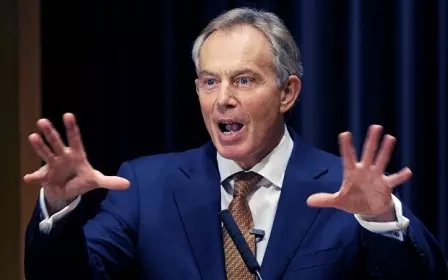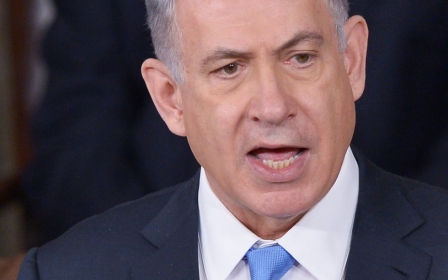ANALYSIS: Oil down on Iran nuclear deal but businesses cautious

LONDON - Political reactions to the Iran nuclear framework agreed on Thursday evening after marathon talks have been mixed, while the response of global markets was more muted than some analysts had predicted.
Diplomats involved with the deal have called it “historic” and some commentators have even been “wildly impressed”, while opponents have branded the agreement everything from “flawed” and “dangerous” to an existential threat for Israel.
Conversely, however, the business community and global markets have been more subdued.
Despite widespread assessments from market analysts that already low oil prices might plummet as much as 10 percent on the news of an agreement, the price for Crude Oil Brent – the global benchmark - dipped by 5 percent and has since recovered to 3.8 percent.
The West Texas Intermediate (WTI) – the US benchmark – fell less than 2 percent.
The expected drop in price has been linked to beliefs that a deal would allow cheap Iranian oil and gas to flood the already oversaturated market that has been blamed for the tumble in global prices. Since highs last summer the price of a barrel of crude has fallen by more than 50 percent to around $50 a barrel in recent weeks partly due to Saudi pressure to keep OPEC production steady.
Iran has traditionally been one of the world’s biggest energy exporters but since 2008, when the array of Western and UN sanctions began to bite, oil output has been squeezed significantly, with production falling from four million barrels a day in 2008 to 2.81m bpd on average in 2014.
While Iran has remained the fifth largest producer in the OPEC oil cartel despite the hit, analysts have long argued that Tehran continued to harbour notable spare capacity – the ability to ramp up production - and could relatively easily boost production if sanctions were lifted.
"Iran is a country with considerable oil and gas potential," Francis Perrin, head of the SPE group of energy policy trade journals told AFP.
Iran’s resources are so large and its potential so vast – it is has the world’s second-largest gas reserves behind Russia - that reports circulating before the Thursday announcement were claiming that it would not be unrealistic to see prices fall to just $20 a barrel in the coming weeks on the back of the deal.
"For the world economy, the re-integration of Iran could help to keep oil prices lower for longer and mitigate the risks that conflicts elsewhere such as in Libya might pose to global oil supply," Holger Schmieding, an economist at Berenberg bank, told Bloomberg.
But while the potential for a large-scale shake up remains, reactions have thus far been cautious.
Crucially, French Foreign Minister Laurent Fabius has been quick to stress that the deal does not include any agreement on when the sanctions would be lifted. Politically speaking, such vagueness might have been a necessary, possible even skilful way of reaching the deal in time, but economically speaking, the outline is likely to prove an administrative headache for businesses, investors and banks looking to resume ties.
In recent years, a string of US and UK banks have been probed and some fined billions for allegedly facilitating trade and transactions with Iranian counterparts in contravention of sanctions.
"I can't see any major rollback of sanctions that will help the banking or insurance or natural resources industries," said Jack Hayes, a lawyer with Steptoe & Johnson in Washington, who specialised on Iranian sanctions.
"I think everyone's going to be very cautious."
Danforth Newcomb, another US-based lawyer specialising in sanctions, was even more dismissive:
"I have a 3-foot by 4-foot poster on the wall of my office with every sanction against Iran written out in fine print, and now I'm going to have to go through it and colour-code what may become permissible and what's not.”
"It's becoming more complicated to know what's OK to do with Iran, not less,” he told Bloomberg.
Even if these obstacles are overcome by the final 30 June deadline, progress is likely to be slow, with years of under investment likely to prove a challenge and low energy prices – which are widely expected to keep experiencing downward pressures for the rest of the year – hindering investment.
According to FBR Capital Markets it will take at least six months for Iran to be able to significantly step up oil exports, with serious doubts being placed on whether Iran could produce the extra one million barrels a day (MMbbls/d) previously promised by Tehran.
Even if the export cap is removed, “commercial issues could be a drag” with Western markets taking a long time to get accustomed to the legal relaxations around trade.
“Finally, the extent of Iran’s productive capacity remains in doubt. Iran likely has significant stored oil, but without significant investment, it may struggle to sustainably add the 1 MMbbls/d promised by its oil minister,” FBR Capital Markets said.
New MEE newsletter: Jerusalem Dispatch
Sign up to get the latest insights and analysis on Israel-Palestine, alongside Turkey Unpacked and other MEE newsletters
Middle East Eye delivers independent and unrivalled coverage and analysis of the Middle East, North Africa and beyond. To learn more about republishing this content and the associated fees, please fill out this form. More about MEE can be found here.





